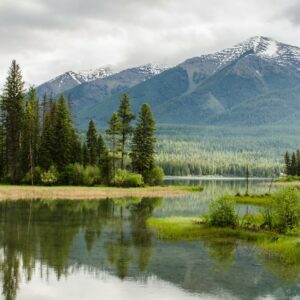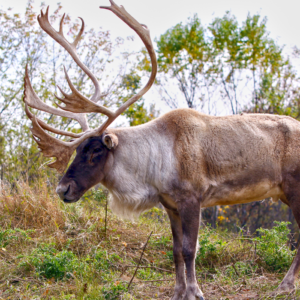Preserving Rare Ecosystems and Biodiversity in Canada
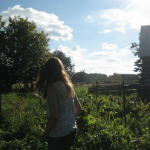
Blair Scott,
Professional Writing Intern
British Columbia is a province of vast ecological treasures – it is home to great mountains, beautiful oceans, and pristine landscapes of rugged forests. It also contains one of the highest numbers of provincial parks and ecological reserves in Canada – with 443 parks and 131 reserves documented by The Canadian Encyclopedia in 1996. The list does not end there, however – BC’s South Okanagan-Similkameen Valley region has been cited as one of the most important natural landscapes in Canada to protect.
The South Okanagan-Similkameen Valley features two of the four most endangered ecosystems in Canada – the dry bunchgrass grasslands and the open Ponderosa pine forests. It also hosts Canada’s only “pocket desert.” Breathtaking views of the nighttime sky can be seen here, so if you enjoy the company of stars amidst serene desert-solitude, you will definitely want to visit this place!
There are currently 56 federally-listed endangered species that reside in this region. This includes plant and animal species found nowhere else in Canada, such as Lyall’s Mariposa Lily, the Flammulated Owl and the Great Basin Spadefoot Toad.
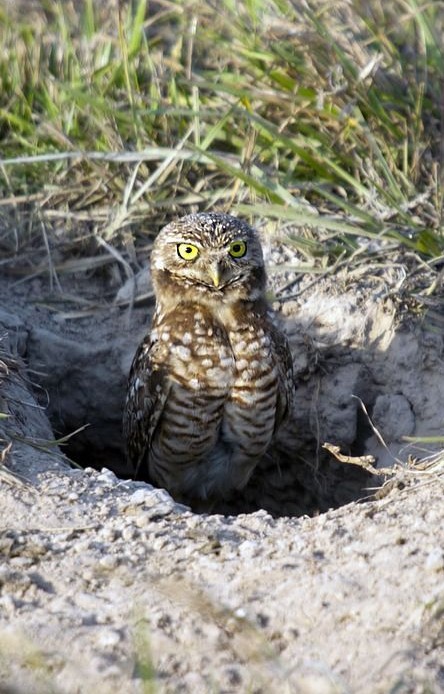
Burrowing Owl appropriately burrowing into a hole – victim of habitat loss
While the South Okanagan-Similkameen Valley contains high biodiversity value, the region is also degrading in its biodiversity as a result of development projects and climate impacts. Human impact has already taken a toll on the Burrowing Owl, the Sharp-tailed Grouse and the White-tailed Jackrabbit – formerly-thriving residents of the region.
Over the years, concerns of local residents and First Nations have been burgeoning –sparking grassroots movements and organizational partnerships in the process. In 2002, the Okanagan Nation Alliance and members of the community initiated the request for a national park reserve. The governments of Canada and British Columbia responded a year later by signing a Memorandum of Understanding as a gesture of acknowledgement and support. Since then, several “feasibility assessments” have been made, and it was estimated in 2010 that the proposed park will sprawl across 284 square kilometres of the South Okanagan-Similkameen Valley.
Rare Species Profiles:
The Flammulated Owl (Otus Flammeolus): classified under SARA as Schedule 1, Species of Special Concern; identification:
- Small owl with stubby, little ear tufts
- Large, black-button eyes
- Colourful, changing feather pattern – in the Ponderosa pine forests of the south, reddish hues predominate; in the northernmost parts of the region, grayish hues mixed with browns match the Douglas-fir trees around
- Habitat is threatened by agricultural activities and forest operations – not good for a creature that dwells in the woods
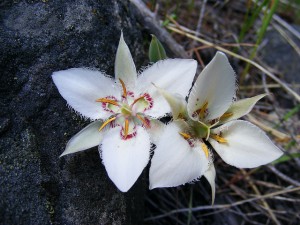
The Lyall’s Mariposa-lily by Five Acre Geographic (CC BY-ND 2.0)
Lyall’s Mariposa Lily (Calochortus lyallii): classified under SARA as Schedule 1, Threatened Species; identification:
- White with a moon-shaped spot at the base of its petals – may bear a purple “crescent” on top
- Similar to the Three-spot Mariposa Lily (Calochortus apiculatus), except smaller
- Like other Mariposa lilies, it is characterized by a set of three petals interlaced with three sepals, and takes refuge in grassy meadows and dry hillsides
- Shade intolerant
- A very rare lily in the southern interior of British Columbia; in Canada, this lily species only occurs between the Similkameen river and the Okanagan Valley
- Several threats ranging from predators (insects/small mammals), invasive weeds, land alteration via coniferous tree planting, availability of pollinators and reproductive failure
The Great Basin Spadefoot Toad (Spea intermontana): classified under SARA as Schedule 1, Threatened Species; identification:
- Medium-sized; 40-65 mm long
- Hues of olive, browns, light-gray shades; dark, raised patches on its back
- The soles of its hind feet are spiked with spades – used to burrow
- Possess “cat eyes” separated by a glandular bump in the middle (a.k.a. a “boss”)
- Resides in dry grasslands and open forests; needs a combination of terrestrial and aquatic habitat
- Habitat is threatened by agricultural activity and land development
Fun Facts
- Did you know that BC was the first province in Canada to formally establish permanently-protected ecological reserves? They were able to do so with the 1971 enactment of the Ecological Reserves Act.
- Ecological reserves are distinct from parks. While the latter permits many types of recreation such as camping, fishing and hunting, these “consumptive” activities are prohibited in designated ecological reserves. However, nature-appreciation activities such as bird watching, wildlife viewing and photography are generally permitted.

